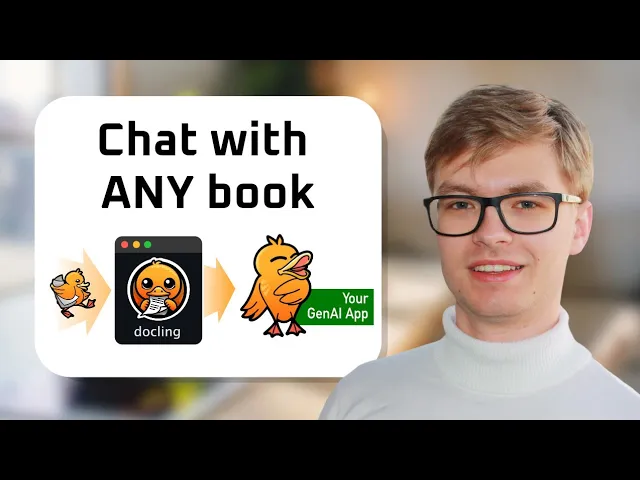The Future of Technical Documentation - Interactive AI Tutors
Technical documentation has traditionally been challenging to navigate—comprehensive but often overwhelming. By transforming technical books into interactive AI tutors, we can create learning experiences that maintain depth while addressing the specific challenges technical learners face.
The Limitations of Linear Documentation
Traditional technical documentation, whether for programming languages, frameworks, or complex systems, faces inherent challenges:
- Information density can overwhelm learners
- Linear organization doesn’t match non-linear learning needs
- Finding specific solutions requires wading through theory
- Context switching between concepts is cumbersome
- Expert terminology creates barriers for newcomers
These limitations aren’t due to poor writing but the static nature of the medium itself. Even the best-written documentation can’t anticipate every reader’s specific needs or knowledge gaps.
Precision Knowledge Retrieval
Interactive AI tutors excel at extracting precise information from dense technical material. When dealing with an 800-page Git manual, for instance, learners can:
- Ask specific implementation questions
- Retrieve exact command syntax with explanations
- Find relevant examples for particular use cases
- Understand error messages and troubleshooting steps
- Extract conceptual explanations of complex processes
This precision eliminates the common frustration of knowing the information exists somewhere in the documentation but being unable to find it efficiently.
For AI engineers building similar systems, understanding how to implement RAG systems for document retrieval provides the foundation for creating these kinds of interactive knowledge bases.
Contextual Learning Without Information Overload
Technical learning often requires understanding complex interdependencies between concepts. AI tutors help manage this complexity by:
- Providing just-in-time explanations of prerequisites
- Offering appropriate depth based on your questions
- Connecting related concepts across different chapters
- Filtering out unnecessary details for specific tasks
- Building progressive understanding through conversation
This approach prevents the cognitive overload that often occurs when learners must process massive amounts of information before applying it practically.
Bridging Theory and Application
A significant challenge in technical learning is connecting theoretical concepts to practical applications. Interactive AI tutors help bridge this gap by:
- Explaining the principles behind specific techniques
- Connecting abstract concepts to concrete examples
- Providing context for why certain approaches are used
- Translating between conceptual frameworks and implementations
- Supporting both task-oriented and conceptual questions
For instance, when learning about Git’s storage mechanisms, you can explore both the practical commands and the underlying object model concepts, switching between perspectives as needed.
Improving Knowledge Retention Through Interaction
Passive reading often leads to lower retention rates compared to active learning. The conversational nature of AI tutors promotes:
- Active engagement through question formulation
- Retrieval practice as you ask about previously explored concepts
- Elaboration as the system provides relevant examples
- Connection-making between related ideas
- Application thinking as you relate concepts to your needs
This interactive approach aligns with proven learning principles, turning documentation reading from a passive into an active experience.
This shift in learning methodology is particularly valuable for professionals transitioning to AI engineering careers, where mastering complex technical concepts quickly can accelerate career progress.
Evolution of Technical Learning Resources
The transformation of technical books into interactive tutors represents a broader evolution in how we approach technical learning:
From Reference to Responsive Guide
Instead of static references that must be manually searched, technical resources become responsive guides that adapt to specific learning needs.
From Linear to Contextual Organization
Knowledge access shifts from chapter-based linear progression to contextual retrieval based on relationships between concepts.
From Generic to Personalized
Documentation adapts to individual knowledge gaps and learning goals rather than presenting a one-size-fits-all explanation.
From Isolated to Connected Learning
Technical concepts are connected across chapters and sections, creating a more comprehensive understanding of the whole system.
The Human-AI Learning Partnership
AI tutors don’t replace human understanding or judgment—they enhance it. The technical professional still:
- Forms the questions based on practical needs
- Evaluates the relevance of retrieved information
- Applies the knowledge in specific contexts
- Makes implementation decisions
- Develops a personal mental model of the system
The AI simply makes accessing and processing the information more efficient, allowing professionals to focus their cognitive resources on application and innovation rather than information retrieval.
Understanding how to build these AI-powered systems using production-ready architectures enables developers to create their own interactive documentation tools for their teams or organizations.
To see exactly how to implement these concepts in practice, watch the full video tutorial on YouTube. I walk through each step in detail and show you the technical aspects not covered in this post. If you’re interested in learning more about AI engineering, join the AI Engineering community where we share insights, resources, and support for your journey. Turn AI from a threat into your biggest career advantage!

